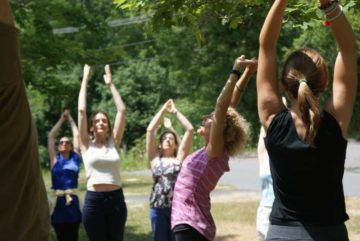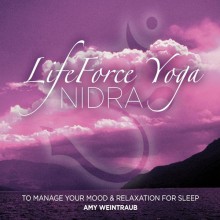
We were born with an anxiety gene. Anxiety is evolution’s gift to and it’s curse on our species. Anxiety protected our long ago ancestors from wild beasts and marauding tribes. Our species has been ever on the lookout, hyper-vigilant, wary of attack. Those who were careless or a little too laid back in the face of a grizzly or an invader didn’t survive.
Anxiety is nothing new. What’s new is that we are more alone with it. Gone is the village square where are grandparent’s gathered. Even the dining room table where our families gathered to tell the stories of their days at the office, or on the farm or in school is fading from view. When I grew up, my family gathered around the television, as though it were a hearth, to watch the Beatles on the “Ed Sullivan Show,” or Walter Cronkite deliver the news of the day, or re-runs of “I Love Lucy.” Now we each have our own device to watch the programs of our choice. Our families are spread out, dislocated, divorced. The village no longer raises the child. We are hooked in, wired, with hundreds of Facebook friends, but with no one to call when we’re feeling lousy.
So yes, we all experience anxiety. But we don’t all suffer with it. What are the signs that you may need to take action to address your angst?
There are over 100 symptoms of anxiety, and they show up differently for each of us. Some of us will experience physiological symptoms such as back pain, skin rash, headache, shortness of breath. Some of us will feel it emotionally as fear. Our fears may be rational or irrational. What matters is that they constrict us and keep us from feeling our best. You can read about the many symptoms of anxiety in greater depth at the Anxiety Center, a website with a lot of good resources.
So whether you are feeling anxiety in ways that make you suffer or you just feel wound-up, yoga practice can calm your aroused state. Whether you practice at home with a DVD or CD, attend a weekly yoga class or a weekend workshop, yoga can connect you to that quiet mind, “the still point in the turning world,” as T.S. Eliot described it, beneath the chaos of your daily life. Going to a class can connect you to like-hearted others, reducing feelings of isolation, depression and anxiety. In Sanskrit, we call it sangha or kula, and it means community. If you’re looking for a workshop to reconnect with your own true Self beneath your anxious thoughts and to connect authentically with others visit our Events Calendar.
If you would like to find a LifeForce Yoga Practitioner in your area who offers workshops and classes on yoga for mood  management or a psychotherapist who integrates LifeForce Yoga-based practices into talk therapy, you can find one here.
management or a psychotherapist who integrates LifeForce Yoga-based practices into talk therapy, you can find one here.
Studies have shown that Yoga Nidra, a lying down yoga meditation, significantly reduces anxiety. To listen to a sample of the LifeForce Yoga Nidra for Managing Mood CD (downloadable) pleaseclick here.